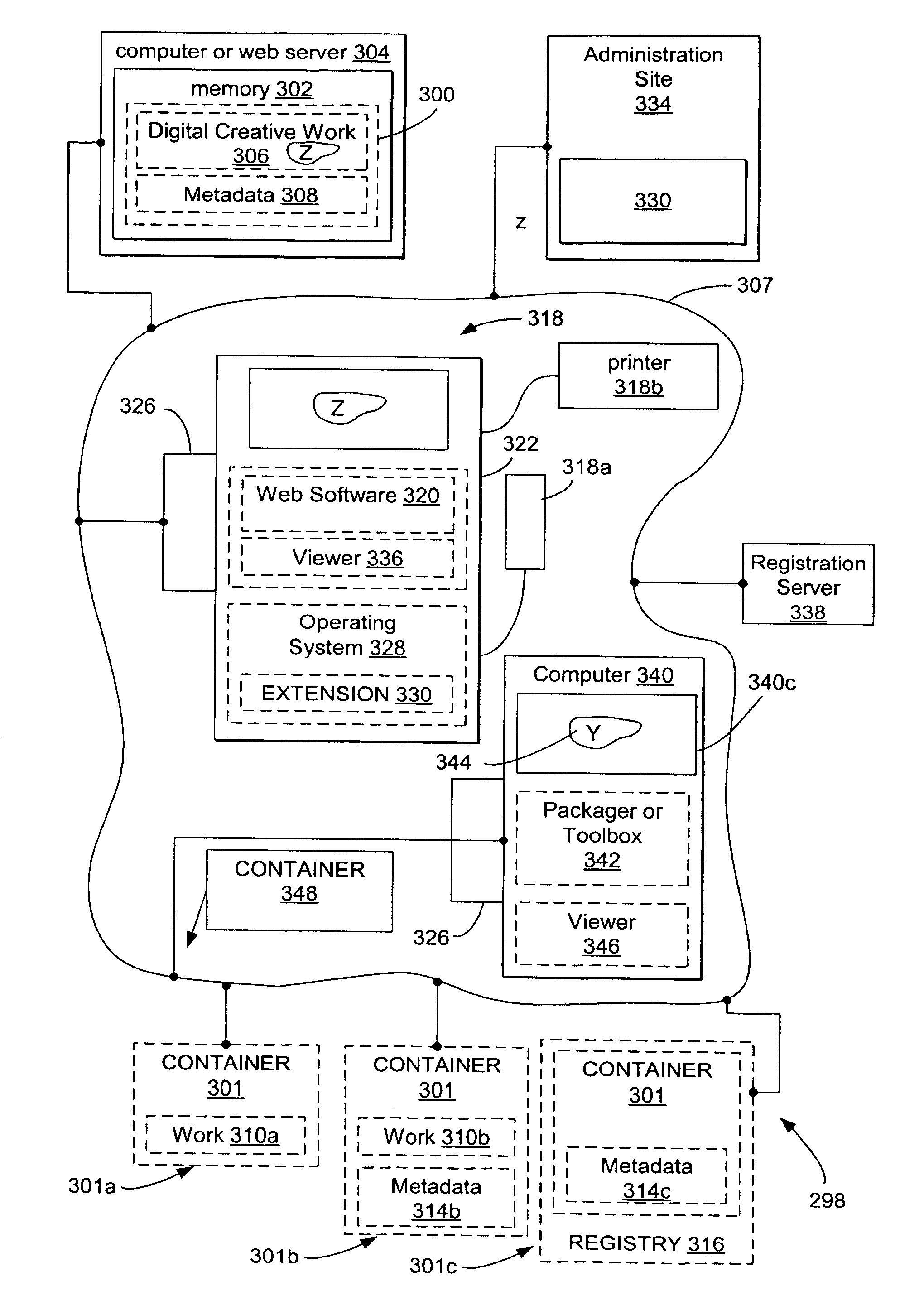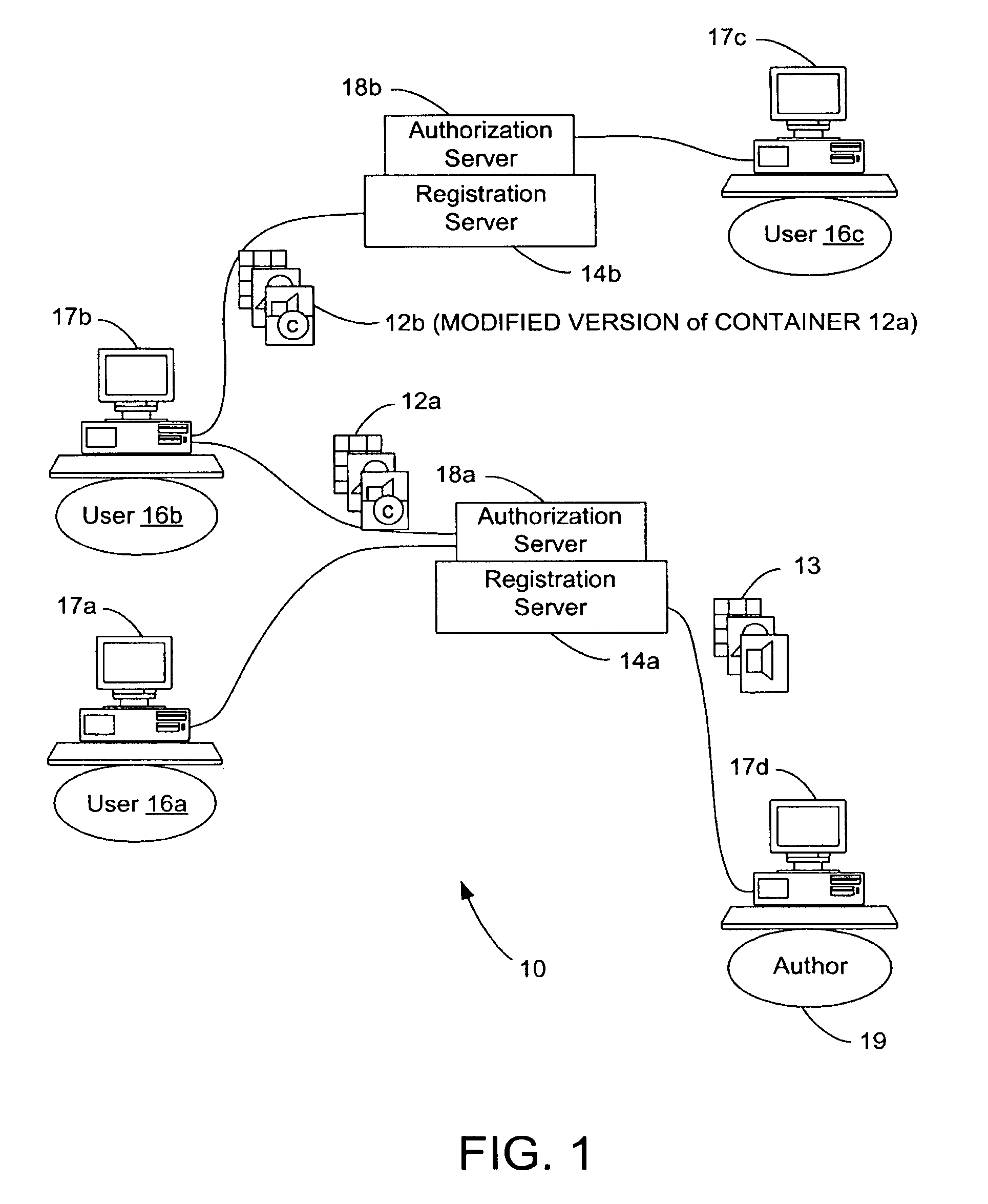System and methods for managing digital creative works
a digital creative and management system technology, applied in the field of system and methods for managing digital creative works, can solve the problems of difficult to determine copyright violations of hard copy creative works, difficult to achieve significant errors, and difficult to manage digital media,
- Summary
- Abstract
- Description
- Claims
- Application Information
AI Technical Summary
Benefits of technology
Problems solved by technology
Method used
Image
Examples
Embodiment Construction
[0141]FIG. 1 illustrates a system 10, constructed according to the invention, whereby CONTAINER 12a, 12b are created and packaged, and then registered on associated registration servers 14a, 14b, respectively. Users 16a, 16b and 16c are connected for data transfers with one or more of the authorization servers 18a, 18b, such as through a computer network or the Internet.
[0142]The illustrated CONTAINERs 12a, and 12b are created as copyrighted media by author 19 and user 16a, a derivative author of the work 12a. For example, media 13 is representative of original work of authorship. Thereafter, the CONTAINERs 12a, 12b are packaged as a data container, according to the systems and methods described herein, and as denoted by the copyrighted © symbol marked over the media. These packaged CONTAINERs 12a, 12b are registered on servers 14a, 14b, respectively, and are made available for license through authorization servers 18a, 18b. A single server can operate as both the registration serve...
PUM
 Login to View More
Login to View More Abstract
Description
Claims
Application Information
 Login to View More
Login to View More - R&D
- Intellectual Property
- Life Sciences
- Materials
- Tech Scout
- Unparalleled Data Quality
- Higher Quality Content
- 60% Fewer Hallucinations
Browse by: Latest US Patents, China's latest patents, Technical Efficacy Thesaurus, Application Domain, Technology Topic, Popular Technical Reports.
© 2025 PatSnap. All rights reserved.Legal|Privacy policy|Modern Slavery Act Transparency Statement|Sitemap|About US| Contact US: help@patsnap.com



